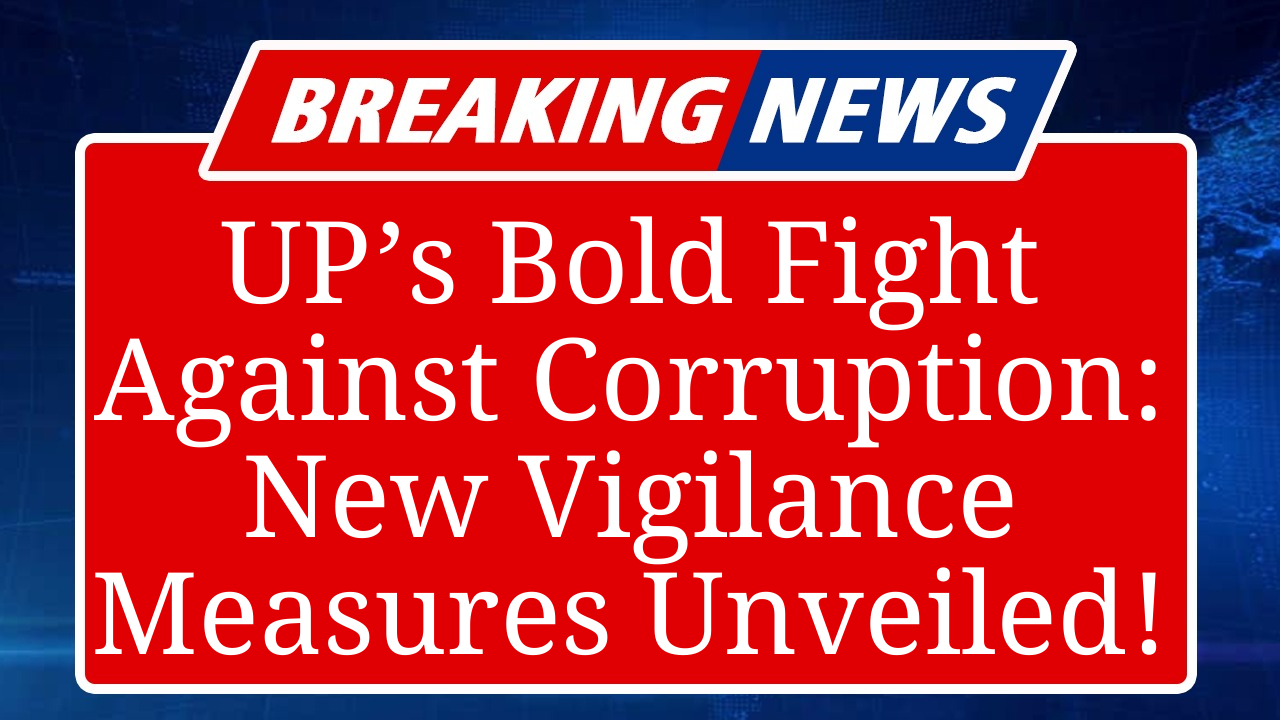Uttar Pradesh’s government has introduced stringent vigilance measures to combat corruption, including enhanced monitoring, digital complaint systems, and stricter penalties. The Anti-Corruption Bureau’s proactive raids and public awareness campaigns aim to foster transparency. These steps address systemic issues, targeting corrupt officials and promoting accountability across public sectors, as part of Chief Minister Yogi Adityanath’s zero-tolerance policy.
UP Strengthens Vigilance to Curb Corruption
In a bold move to tackle corruption, the Uttar Pradesh government has rolled out a series of stringent vigilance measures aimed at fostering transparency and accountability. Chief Minister Yogi Adityanath’s administration has prioritized a zero-tolerance approach, emphasizing robust monitoring mechanisms and proactive enforcement to root out malpractices in public offices. The state’s Anti-Corruption Bureau (ACB) has been empowered with enhanced resources to conduct surprise raids and investigations, targeting officials involved in bribery and misuse of power.
A key component of these measures is the integration of technology to streamline complaint registration and tracking. The UP government has launched a dedicated online portal and mobile application, enabling citizens to report corruption anonymously. This digital platform, monitored by the Vigilance Department, ensures swift action on verified complaints, with a 24/7 helpline (1800-180-5152) for real-time assistance. In 2024 alone, the ACB registered over 1,200 cases, with 300 officials prosecuted for corrupt practices, according to official data.
The state has also introduced stricter penalties under the Prevention of Corruption Act, 1988, with amendments aligning with the 2018 updates that criminalize both bribe-taking and bribe-giving. Special courts have been established in Lucknow, Kanpur, and Varanasi to expedite trials, reducing case backlogs. In a recent high-profile case, a senior municipal officer in Lucknow was arrested on October 15, 2025, for accepting a ₹5 lakh bribe, showcasing the ACB’s proactive stance.
Public awareness campaigns are another pillar of UP’s strategy. The government has partnered with civil society organizations to educate citizens about their rights under the Right to Information Act, 2005, and the role of whistleblowers in exposing corruption. Workshops and seminars across districts have reached over 50,000 citizens in 2025, encouraging them to report malpractices without fear of retaliation.
The Vigilance Department has also implemented mandatory asset declaration for public servants, with non-compliance leading to immediate inquiries. In 2024, 85% of state employees complied, up from 60% in 2022, reflecting improved adherence. The Lokayukta, UP’s ombudsman, has been tasked with overseeing high-level corruption cases, including those involving elected representatives, ensuring no one is above scrutiny.
To address systemic corruption, the government is focusing on digitizing public services. Initiatives like e-governance platforms for land records and public procurement have reduced human intervention, minimizing opportunities for graft. For instance, the e-tendering system has saved ₹2,000 crore in public expenditure since 2023 by curbing inflated contracts, as per state audits.
Despite these efforts, challenges remain. Critics argue that political will and consistent enforcement are crucial for sustained impact. A 2024 Transparency International report ranked India 93rd out of 180 countries on the Corruption Perceptions Index, highlighting the need for broader reforms. In UP, rural areas still face issues of low awareness and access to digital tools, which the government aims to address through mobile outreach units.
The state’s vigilance measures have drawn praise for their proactive approach. The ACB’s recent crackdown on a ration distribution scam in Gorakhpur, where 12 officials were suspended, underscores the government’s commitment. With ongoing investments in technology and public engagement, UP is setting a precedent for anti-corruption reforms in India.
Disclaimer: This article is based on recent news, official government reports, and data from credible sources such as the Uttar Pradesh Vigilance Department, Transparency International, and media outlets. The information reflects the latest developments as of September 2, 2025, and is intended for informational purposes only.

